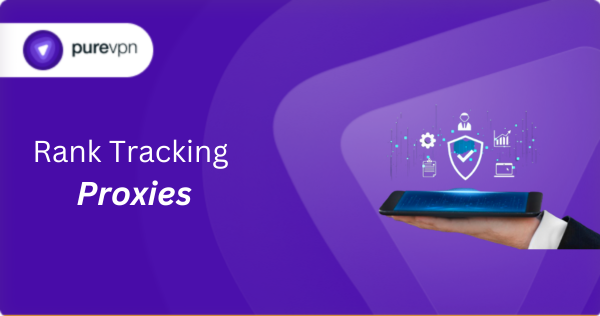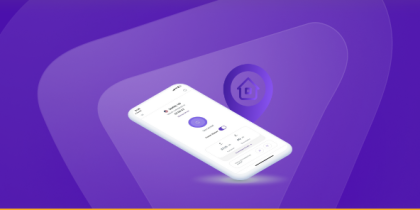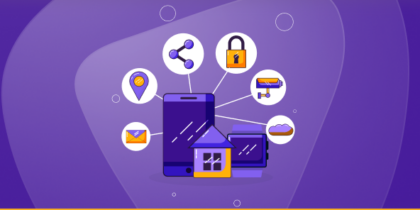Search rankings change constantly across regions, devices, and even users. To keep up, SEOs rely on rank tracking tools that show where a website stands for every keyword. However, since search engines personalize and rate-limit results, what you see may not reflect what users in another city or country see.
Proxies make it possible to see search results exactly as users in those areas would by routing queries through different IPs and regions. In our guide to rank tracking proxies, we’ll go over what rank tracking is, why proxies are essential for it, and how different proxy types affect accuracy and reliability.
What is Rank Tracking?
Rank tracking is the process of monitoring where a website appears in search engine results (also known as SERPS) for specific keywords over time. It helps SEO professionals understand how their optimization efforts, backlinks, or content changes affect visibility and traffic potential.
By checking keyword positions across devices, locations, and languages, rank tracking reveals trends that guide strategy, whether it’s improving on-page SEO, evaluating competitors, or measuring campaign success. Accurate tracking is important because even a few position changes can mean major shifts in clicks and conversions.

Why Proxies Matter in Rank Tracking?
Search engines personalize results based on factors like location, search history, and device type, making it difficult to collect objective ranking data since every query can return slightly different results. Without proxies, your rank tracker repeatedly connects from the same IP address and location, making your data biased and vulnerable to rate limits or temporary blocks.
Proxies solve this by rotating IPs and simulating searches from multiple regions. They let SEOs see how rankings differ from one city or country to another, identify local competitors, and track keyword performance globally without triggering search-engine defenses. In short, proxies make your rank tracking data accurate, location-specific, and unrestricted.
How Rank Tracking Tools Use Proxies
Rank tracking tools rely on proxies to collect search results as if each request came from a different user and location. When a keyword is tracked, the tool sends automated queries to search engines through rotating IPs instead of a single connection, preventing blocks and ensuring accurate, region-specific results.
Each proxy acts like a separate browser session, complete with its own IP address and sometimes even unique device or language settings. By spreading requests across multiple IPs, proxies help avoid detection, maintain consistent uptime, and provide clean SERP data for every keyword.
Types of Proxies Used for Rank Tracking
Proxies differ in speed, reliability, and how effectively they mimic real user behavior. The right choice depends on your rank-tracking setup, scale, and accuracy goals. The table below highlights how each proxy type compares before we break them down in detail.
| Proxy | Speed | Cost | Detection Risk | Geo Accuracy | Best Use Case |
| Datacenter | Fastest | Low | Higher (easily flagged as non-residential) | Moderate | Large-scale or bulk rank tracking |
| Residential | Moderate | Medium to High | Low (appears as real users) | High | Local SEO tracking and location-specific data |
| Mobile | Slow to Moderate | High | Very Low (highly trusted) | Very High | Mobile SERP checks and app store visibility |
1- Datacenter Proxies
Datacenter proxies are hosted in data centers and not linked to any real Internet Service Provider (ISP). They’re fast, affordable, and ideal for large-scale tracking where thousands of keywords are monitored daily.
However, because their IPs are easily identifiable as non-residential, they’re more likely to trigger CAPTCHAs or temporary search-engine blocks. Datacenter proxies are best for bulk rank tracking when cost efficiency matters more than complete stealth.
2- Residential Proxies
Residential proxies use IPs assigned by real ISPs, making them appear as genuine users in specific cities or regions. This helps rank trackers collect more accurate, localized results while reducing the risk of detection or bans.
They’re slower and more expensive than datacenter proxies but provide better location fidelity and reliability. Residential proxies are especially useful for tracking local SEO performance or verifying keyword visibility in targeted markets.
3- Mobile Proxies
Mobile proxies route traffic through IPs assigned by mobile carriers on 3G, 4G, or 5G networks. Since these IPs are shared among many users, search engines view them as genuine and rarely block them.
This makes them ideal for checking mobile SERP variations, ad placements, or even app store rankings. However, their higher cost and limited scalability make them less practical for continuous, large-scale rank tracking.
Related Read: Datacenter Proxies vs Residential Proxies
Cloud-Based vs Self-Hosted Rank Tracking
How proxies are used depends largely on where your rank tracking runs—in the cloud or on your own infrastructure. Each approach manages data collection, IP rotation, and scaling differently.
Cloud-Based Rank Tracking
Most SEO teams use cloud-based rank tracking tools like Semrush or Ahrefs. These platforms manage their own proxy networks behind the scenes, rotating IPs and sourcing results from multiple locations automatically.
Users don’t need to configure proxies or handle CAPTCHAs themselves. However, this also means limited control as you can’t choose specific proxy types or IP ranges, and you’re dependent on the platform’s data freshness and accuracy.
Self-Hosted Rank Tracking
Self-hosted rank tracking gives SEOs full control over how data is collected. You can build or run your own tracking scripts and integrate proxies directly, choosing where IPs originate and how often they rotate.
This flexibility allows for deeper localization and custom keyword testing, but it comes with higher maintenance. You’ll need to manage proxy performance, rotation schedules, and potential bans manually.
Note: For self-hosted or manual rank-tracking workflows, routing traffic through a VPN with residential IPs can simplify localized testing and verification. PureVPN’s Residential Network add-on makes that possible directly within the app.
When to Use Residential IPs for Rank Tracking
Residential IPs are most useful when precision and authenticity matter more than speed or cost. Since they make your queries appear as if they’re coming from real users in specific cities or regions, you can rely on them for accurate, localized rank tracking.
Local SEO Tracking
When you need to measure how your keywords perform in different cities or neighborhoods, residential proxies deliver the most realistic results for SEO monitoring. Because they use genuine ISP-assigned IPs, the SERPs they return closely match what real users see in those areas.
Ad and SERP Verification
For paid ads verification, featured snippets, or map listings, residential IPs ensure you see the same layout and content as users in the target region. They prevent false impressions caused by datacenter IPs, which search engines often flag or reroute to generic results.
Competitor Comparison by Region
If you’re analyzing competitors across multiple markets, residential proxies let you check visibility from each target location. That helps identify where rival domains rank stronger and where your optimization can improve.
Testing Multi-Language or Country-Specific Keywords
Residential IPs make it easier to test how multilingual or geo-targeted content performs in different markets. By keeping search engines from defaulting to your own country’s results, they provide unbiased data collection.
Challenges of Using Residential IPs for Rank Tracking
Residential proxies deliver unmatched accuracy, but they also come with certain trade-offs that SEOs need to consider before relying on them at scale:
- Higher Cost Per Request: Residential bandwidth is more expensive than datacenter IPs, making large-scale keyword tracking significantly costlier over time.
- Limited Geographic Coverage: Some regions have fewer available residential IPs, which can restrict location diversity or delay result collection.
- Inconsistent Speeds: Because traffic passes through real user networks, latency and response times can fluctuate more than with datacenter proxies.
- No Direct Tool Integration: Many rank tracking platforms don’t support residential proxy setup, requiring manual routing in self-hosted environments instead.
- Bandwidth and Rotation Limits: Providers often cap data usage or restrict how frequently IPs can rotate, complicating high-volume keyword tracking.
While residential IPs remain the gold standard for authentic, localized rank tracking, these limitations make them better suited for focused campaigns rather than high-frequency, enterprise-scale operations.
Final Thoughts
Accurate rank tracking requires unbiased, location-true data. Proxies make this possible, with residential IPs offering the highest precision at a higher cost. Cloud tools work for most teams, but self-hosted tracking with residential routing through proxies or a VPN provides greater accuracy and control.








